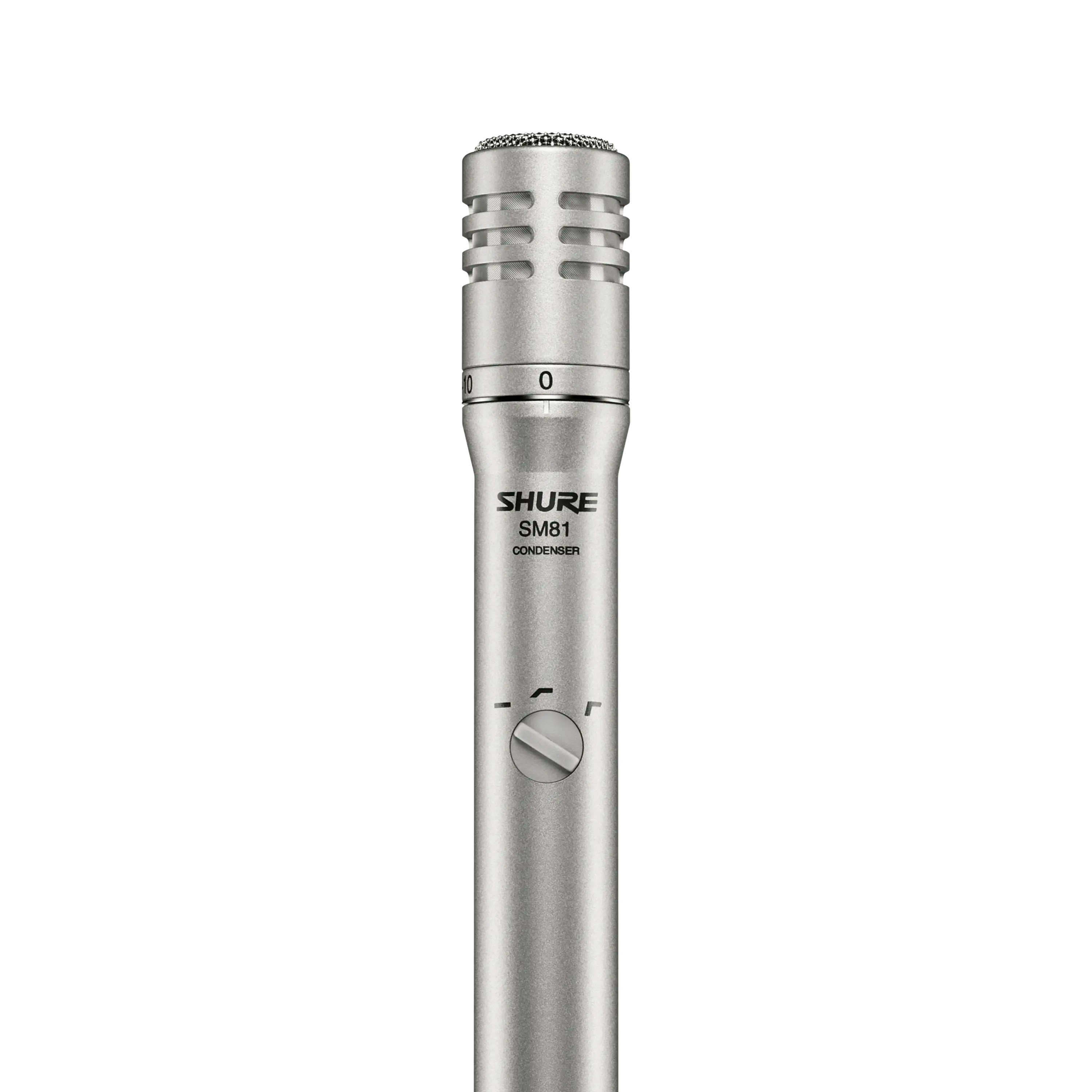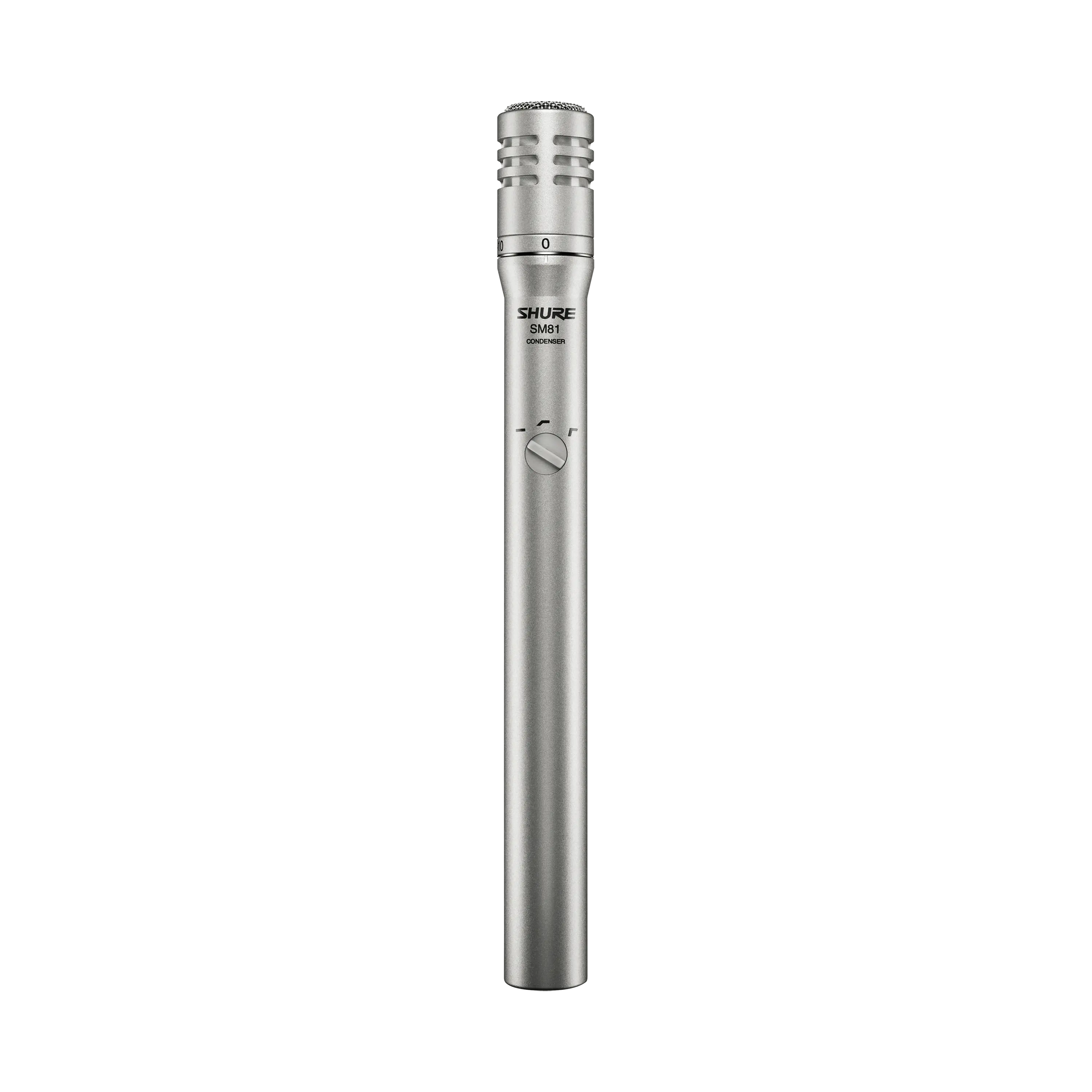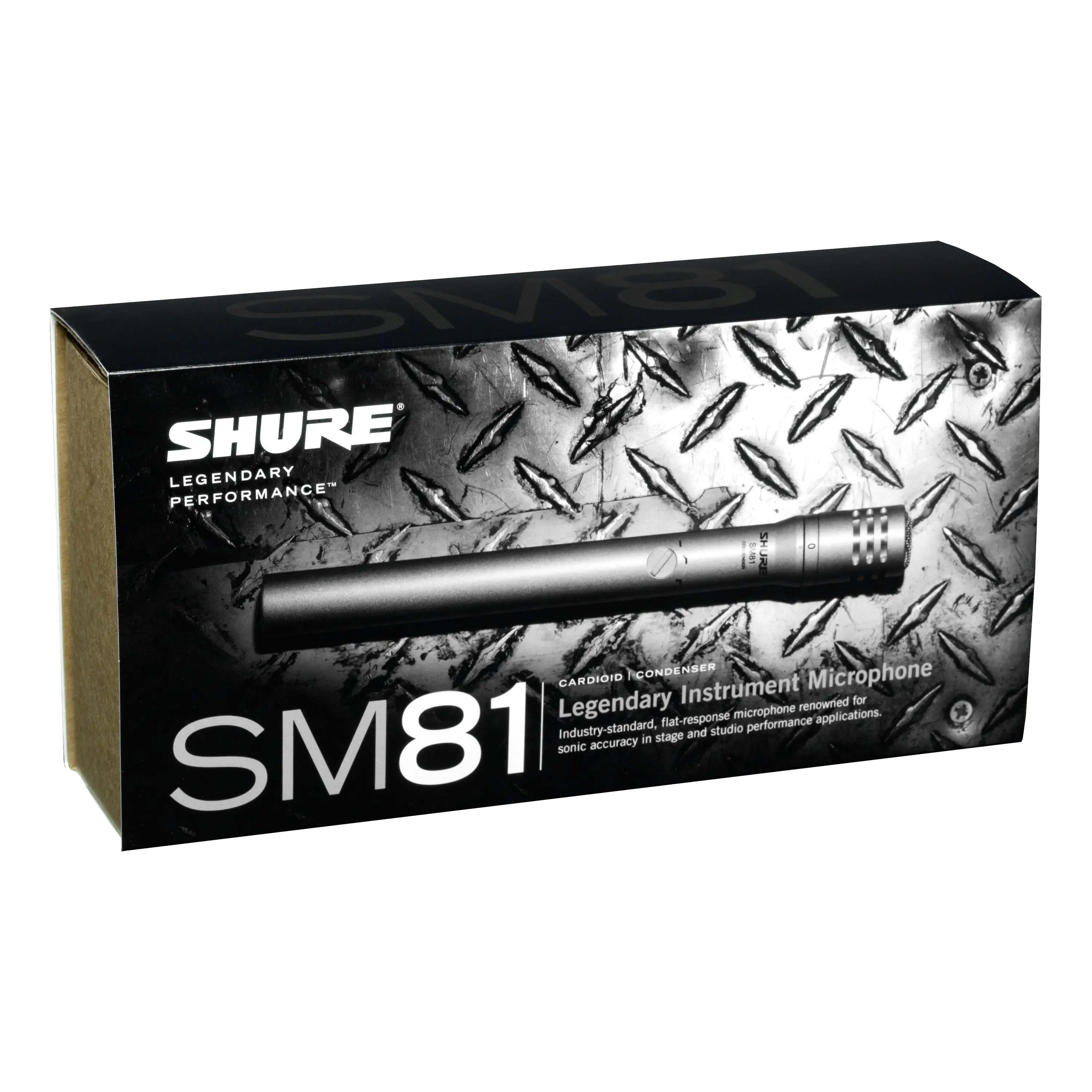Top 8 Microphone Myths Exposed

There are microphone myths just like there are urban myths. And their longevity rivals Bigfoot, Nessie and that mysterious Roswell incident in 1947.
Right here, right now, we're setting the record straight on mic folklore that we've continued to debunk over the years. Check each one of these off your list, and when the subject comes up (yes, it will come up), you'll be the expert.
1. There are wireless microphone frequencies that are completely free from interference.
False. This is a myth that is being propagated by some pro audio manufacturers. The fact is there are no frequencies that are completely free from interference because there are no frequencies that are reserved only for wireless microphones. Even if there were, you could still have interference from other wireless microphones occupying that frequency band.
There are no "safe frequencies". All of the radio spectrum is allocated for different uses by different types of equipment. Every wireless microphone operates in a frequency range that contains other devices. There is no exclusivity in the radio spectrum for wireless microphones.
Our advice: use wireless equipment that is as broadly tunable as possible.
2. Condenser mics are not as rugged as dynamics.
False. In the days when this myth came into existence, condenser microphones were very expensive, studio-grade models. The microphone they were compared to might have been a dynamic like the SM58®. If the ultra-expensive, circa 1930s vacuum tube microphone were dunked into a glass of beer or dropped on the stage ten times, or even one time, it probably would stop working. It will become a paperweight while the SM58 will survive all that.
Today, all of our condenser microphones are engineered to hold up to exactly the same abuse as an SM58. They go through the same exact environmental testing. Drop testing. Temperature testing. Humidity testing. Salt spray testing. Vibration testing. Electromagnetic testing. They have to pass the same battery of tests, and they do.
The SM81 was introduced around 1978 as a studio condenser microphone. But because it is made from a machined steel handle and has the same sort of milspec environmental capability as the rest of our microphones, it was quickly embraced by the touring sound industry. There are SM81s out there on tour today that are probably fifteen or twenty years old. You can drive over them with a truck. Drop them on the floor. Hit them with a drumstick. And the same is true of all our condenser vocal mics.
So, in the modern era, the fragility of Shure condenser microphones is just a myth.

3. A louder microphone is better.
False. Some microphones are more sensitive than others, but microphone sensitivity is not inherently related to quality. In musical applications, when a mic is placed very close to the sound source, the sensitivity of a microphone is not important. There's more than enough signal even from a less-sensitive microphone to provide a PA system with an adequate signal.
If the microphone is overly sensitive, it just means you have to dial in more attenuation on the mixer channel so you don't overload the mixer. If you've got a mic on a snare drum that's 10 dB more sensitive than another mic on the snare, you'll have to turn down the one that's more sensitive.
Extra sensitivity is not related to the sound quality. In the days when neodymium magnet microphones were introduced, it was a common demonstration technique to line up several microphones, connect them to a mixer and set each channel level the same. Each microphone was tested, and when it came to the neodymium magnet microphone, it was noticeably louder than the alnico magnet types.
Psycho-acoustically, listeners tend to equate louder with better, and that's been a common sales technique used in selling stereo speakers. If one pair in a store demo is turned up a little louder than the others, customers tend to think they sound better. Or are better. It's the same with microphones. It's a loudness difference, not a quality difference.
4. USB mics have inferior sound quality vs. their analog (XLR) counterparts.
Not always true. Many USB mics feature the exact same condenser mic element as the XLR version used in studio recording. USB models provide the same high quality sound signature; the primary difference in the models is the interface to the next device. The analog-to-digital converters in the USB mic also affect the quality of the recording.
5. USB mics create latency problems when recording, especially when multi-tracking.
Not always true. Some USB mics, like the Shure PG42-USB and PG27-USB, have built-in headphone amps and provide direct monitoring of the input signal before the analog-to-digital conversion. This also provides an alternative to using your computer speakers for monitoring playback during multi-tracking.
6. Some microphones have more reach than others.
False. Reach is not a specification of a microphone. Mic users have a concept of reach as the ability of a microphone to reach out and grab the desired sound in the midst of some ambient undesired noise conditions. They believe that some microphones can pick up from farther away than other microphones.
The reality is that microphones do not reach out and grab the sound from a distance. They merely measure pressure variations right at the diaphragm itself. The microphone doesn't "know" anything about what is happening at any distance from itself. For this reason, if you try to characterize a microphone's "reach", it's almost completely dependent on the ambient acoustic conditions around the microphone.
Here's an example: Take a microphone to the Superbowl on a Tuesday morning at 2AM in the middle of July. There's nobody there. They've turned off the air conditioning, and it's a huge quiet box. You put your microphone at one side of the stadium and drop a nail on the concrete on the other side of the stadium. Yes, the microphone will pick up the sound of that nail a couple hundred yards away because there's no ambient noise. Go back on Superbowl Sunday in the middle of the fourth quarter when the opposing quarterback is lining up to call the play. Put your microphone down on one side of the stadium, clear out the beer vendors and drop the same ten-penny nail on the concrete. Can you hear the nail? What changed? Same mic, same nail, same concrete, same building. But the ambient noise level is now 100 decibels higher.
The reach of the microphone, if you can even call it that, is mostly dependent on the ability of the microphone to pick up sound in the middle of all that noise. No microphone has a "reach" that is defined independently of ambient noise.
The one specification of a microphone that loosely corresponds to the concept of reach is directionality or the microphone's polar pattern. The directional characteristic of a microphone describes how much sound it picks up from ambient sources compared to how much it picks up on-axis.
The numbers are there, but they're not huge. The difference between how much ambient noise an omnidirectional and a hypercardioid microphone will pick up in the same conditions is only about 6 dB. (The hypercardioid mic picks up 6 dB less ambient noise than an omni.) Because of the Inverse Square Law of Sound, if the distance between the sound source and the microphone is doubled, the level of the sound source drops by six decibels at this greater distance. The ambient noise stays the same.
If an omnidirectional microphone picks up a certain ratio of ambient noise to on-axis sound at one foot away from a sound source, then a hypercardioid microphone can be used at two feet from the sound source and still pick up that same ratio. This is not because the hypercardioid is more sensitive to the on-axis sound but because it is 6dB less sensitive to the ambient noise.
In that sense, the hypercardioid has more "reach". But neither one will work at great distances in the presence of any significant background noise. They only measure the sound that travels to the diaphragm.
7. Phantom power and bias voltage are the same thing.
False. Many users of professional audio equipment believe there is no difference between phantom power and bias voltage. Not true! Phantom and bias are not interchangeable.
Phantom power is a dc voltage (11 – 48 volts) that powers the preamplifier of a condenser microphone. Phantom power is normally supplied by the microphone mixer, but may also be supplied by a separate phantom power supply. Phantom requires a balanced circuit in which XLR pins 2 and 3 carry the same dc voltage relative to pin 1. So if a mixer supplies 48 volts of phantom, XLR pins 2 and 3 of the microphone cable each carry 48 volts dc relative to pin 1. Of course, the mic cable carries the audio signal as well as the phantom voltage.
Mixers that supply phantom power contain current-limiting resistors that act as control valves. If the microphone or cable is improperly wired, these resistors limit the flow of current to the microphone and thereby prevent damage to the phantom supply circuit. A balanced dynamic microphone is not affected by phantom power; however, an unbalanced dynamic microphone will be affected. Although the microphone will probably not be damaged, it will not work properly.
Unlike phantom power, bias does not require a balanced circuit. Bias supplies power to a Junction Field Effect Transistor (JFET) connected to the output of an electret condenser mic element. The JFET acts as an impedance converter that is a necessity in any microphone design that uses a condenser element. A condenser element has a high output impedance (>1,000,000 ohms). The JFET input loads the output of the condenser element with an even higher impedance (>10,000,000 ohms) to minimize loss of signal level. Also, the JFET output provides a low source impedance (1,000 ohms) to feed the microphone preamplifier.
In some condenser microphones, the bias voltage must be supplied on the same conductor as the audio. Condenser elements with a built in JFET use this configuration and employ a single conductor, shielded cable. Other condenser microphones utilize separate conductors for bias and for audio. It's a good idea to consult the manufacturer's data sheet to determine the exact wiring configuration.
A dynamic microphone should not be connected to an input that supplies bias voltage (such as a wireless transmitter) because the audio and the bias voltage will travel down the same conductor. If this occurs, the frequency response of the microphone may be altered or the audio signal distorted. If a dynamic microphone must be connected to an input with bias voltage, a blocking capacitor must be used.
In a typical electret condenser microphone, it is the JFET that requires unbalanced bias and the preamplifier that requires balanced phantom power. This means that a condenser microphone requiring phantom power will not work with an input that only supplies bias, e.g. a wireless transmitter.
Phantom power and bias voltage are not interchangeable!

8. Ribbon mics are too fragile to handle high sound pressure levels and live performance.
False. This is not the case with many current models on the market. Improvements in design and materials over the years now allow ribbon mics to handle high sound pressure levels. The Shure KSM353 and KSM313, for example, are distinguished by their use of a patented material, Roswellite®, for the ribbon. Roswellite is extremely strong, with low mass, high conductivity, and shape memory, enabling the mics to handle significantly higher levels and more challenging conditions in terms of wind blast and plosives, while retaining the characteristic warmth associated with ribbon microphones.
Many ribbon microphones are now intended for capturing vocal and instrumental performances on stage and in the studio to meet the market demand that they be used in a broader range of applications. Shure uses high-quality materials (carbon steel, stainless steel, sterling silver, nickel and gold plating) and robust internal architectures, all hand-assembled, to ensure that the products will stand up to the abuses encountered during road use.
What are your favorite microphone myths? Share them below!




